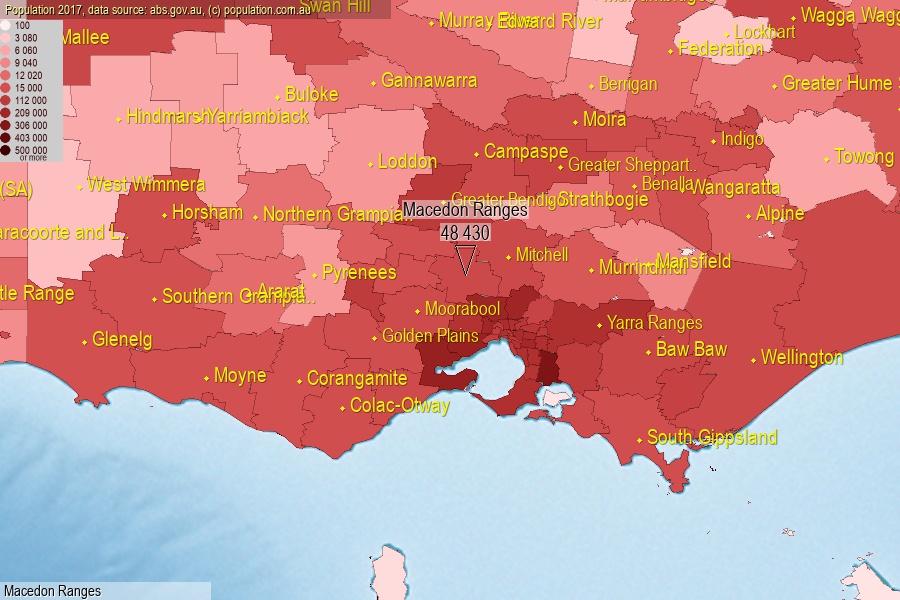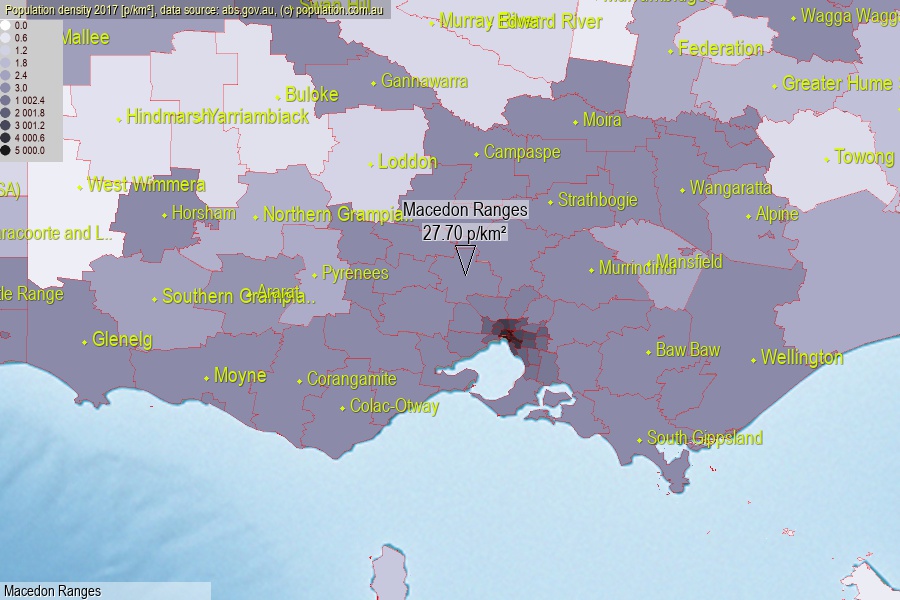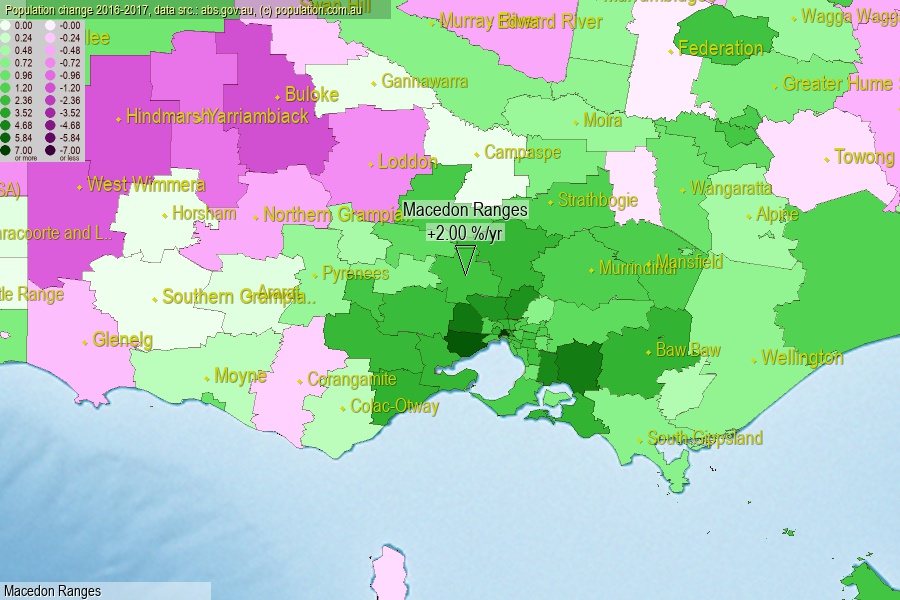 population.com.au
population.com.auLast official estimated population of Macedon Ranges Shire (as Local Government Area) was 48 430 people (on 2017-06-30)[2]. This was 0.20% of total Australian population and 0.753% of VIC population. Area of Macedon Ranges is 1 748.30 km², in this year population density was 27.70 p/km² . If population growth rate would be same as in period 2016-2017 (+2%/yr), Macedon Ranges population in 2025 would be 56 747. [0]



Click to enlarge. Macedon Ranges is located in the center of the images.
Population [people], population density [p./km²] and population change [%/year] [2]
[1996-2001] +1.83 %/Y
[2001-2002] +0.75 %/Y
[2002-2003] +0.90 %/Y
[2003-2004] +1.49 %/Y
[2004-2005] +1.27 %/Y
[2005-2006] +0.99 %/Y
[2006-2007] +1.31 %/Y
[2007-2008] +1.71 %/Y
[2008-2009] +2.46 %/Y
[2009-2010] +1.54 %/Y
[2010-2011] +1.56 %/Y
[2011-2012] +2.12 %/Y
[2012-2013] +1.83 %/Y
[2013-2014] +1.96 %/Y
[2014-2015] +1.98 %/Y
[2015-2016] +2.39 %/Y
[2016-2017] +2.00 %/Y
[0] Calculated with linear interpolation from officially estimated population
[1] Read more about LGA and Australian Statistical Geography Standard (ASGS) on abs.gov.au
[2] Population data from Australian Bureau of Statistics (Population and density: 2017; change: 2016-2017)
[3] Digital Boundaries: Australian Statistical Geography Standard (ASGS) 2016.